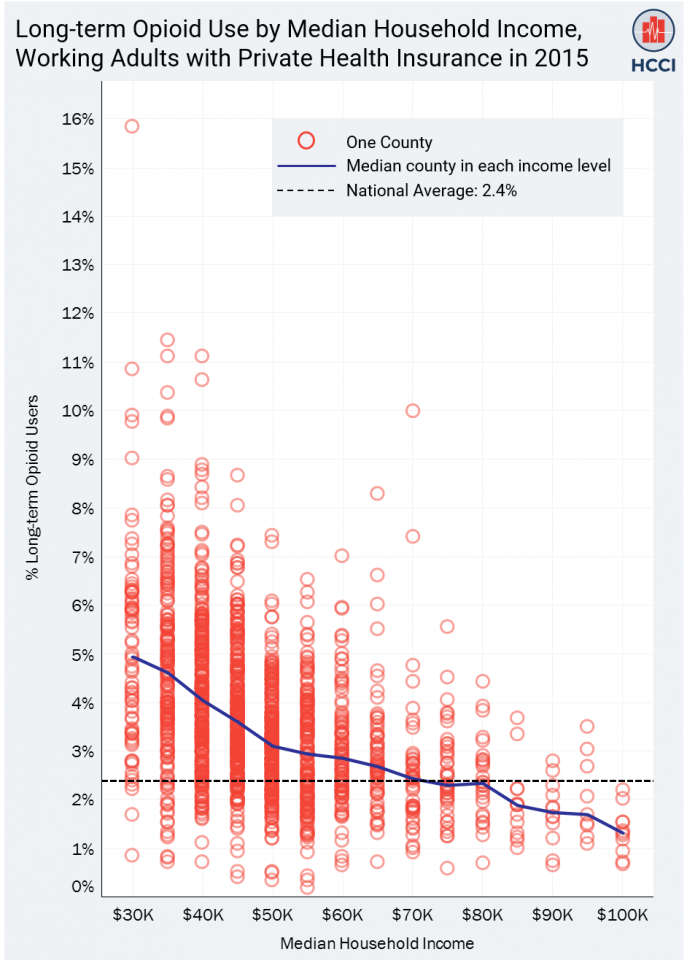Past literature has found links between higher opioid use and local economic conditions for people enrolled in public health programs, but there has been little discussion of whether this relationship occurs among the privately insured. Using HCCI claims data and county level income data from the US Census Bureau, we examined how a county’s median household income relates to long-term opioid use among the county’s working adult population with private health insurance in 2015. In analyzing over 1,500 counties, we found that employed adults (over the age of 18) living in counties with lower median incomes had greater rates of long-term opioid use (having filled at least 6 prescriptions for opioids) compared to employed adults in higher income counties. Nationally, 2.4% of employed adults with private health insurance were long-term opioid users in 2015. In the lowest median income counties ($30k or less), 4.9% of the employed adult population were long-term opioid users, with some counties having rates as high as 15.8%. In contrast, just 1.3% of the same population in the highest median income counties ($100k or more) were long-term opioid users and the highest rate in these counties was 2.3%.
between higher opioid use and local economic conditions for people enrolled in public health programs, but there has been little discussion of whether this relationship occurs among the privately insured. Using HCCI claims data and county level income data from the US Census Bureau, we examined how a county’s median household income relates to long-term opioid use among the county’s working adult population with private health insurance in 2015. In analyzing over 1,500 counties, we found that employed adults (over the age of 18) living in counties with lower median incomes had greater rates of long-term opioid use (having filled at least 6 prescriptions for opioids) compared to employed adults in higher income counties. Nationally, 2.4% of employed adults with private health insurance were long-term opioid users in 2015. In the lowest median income counties ($30k or less), 4.9% of the employed adult population were long-term opioid users, with some counties having rates as high as 15.8%. In contrast, just 1.3% of the same population in the highest median income counties ($100k or more) were long-term opioid users and the highest rate in these counties was 2.3%.

Methods Note
We limited our study population to patients in the HCCI commercial claims data who had continuous medical and drug coverage throughout 2015, were the employee or subscriber of their health plan (no spouses or dependents), and over the age of 18. We restricted our sample to counties with 200 or more claims for opioid prescriptions, resulting in a final population of 7.3 million people across 1,539 counties.We obtained county median household income for 2015 from the US Census Bureau’s American Community Survey, 2010–2015. Members’ county of residence was determined based on their ZIP code. For ZIP codes that cross county boundaries, members were attributed to the county that contains the majority of the ZIP code population.
From HCCI prescription drug claims we extracted all filled opioid prescriptions for our study population. Opioids were identified from the Centers for Disease Control and Prevention’s (CDC) compilation of opioid formulations. We define
long-term opioid users as people with at least 6 prescriptions in a year.
